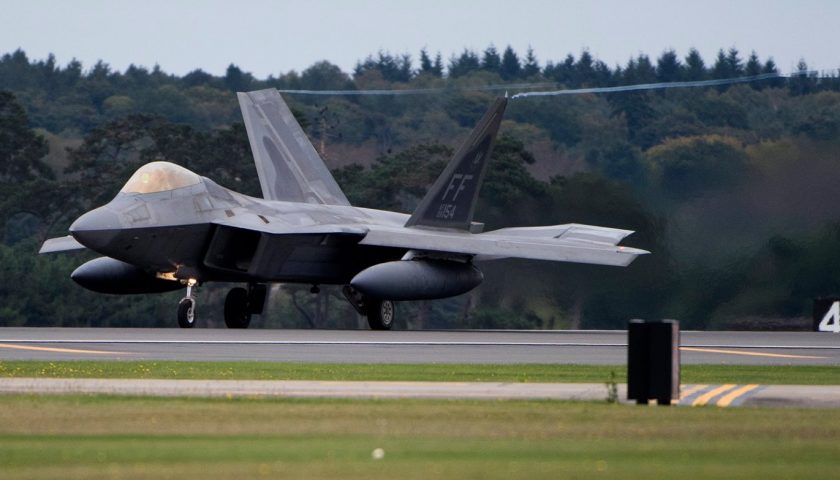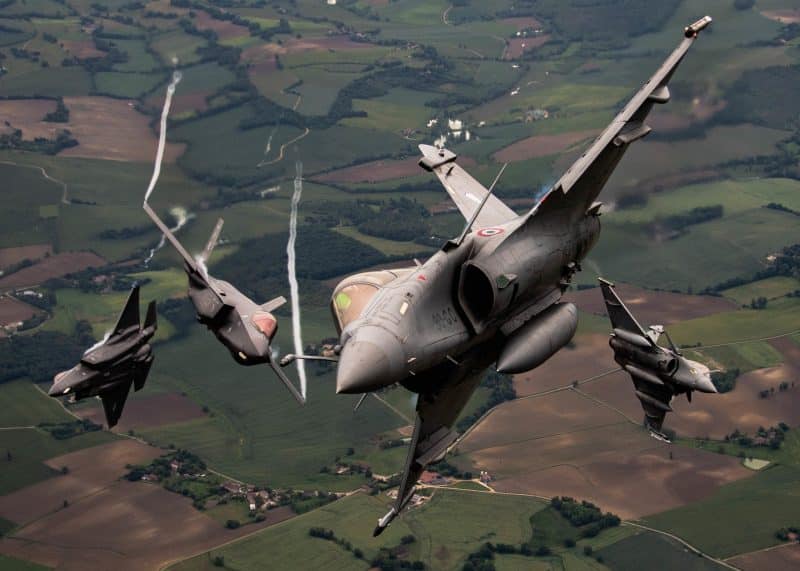At the end of last week, and as expected, the Finnish authorities have announced that they have selected the American F-35A fighter to succeed the F-18 within its air forces, following the HX competition which saw the American fighter once again confront other Western models, F/A 18 E/F Super Hornet, Gripen, Rafale et Typhoon. As in Switzerland, the conclusions presented by the Finnish authorities are clear, the F-35 appearing superior to other competitors in all areas, including in the area of budgetary sustainability. And as in Switzerland, many voices are now being raised to question the numerical values retained as part of this evaluation, and which do not correspond to those observed by other countries already implementing the stealth hunter from Lockheed-Martin, Norway in the lead.
The fact remains that today, the tidal wave of the F-35 in Europe is almost absolute, the device having imposed itself in all the competitions in which it has participated for ten years, and now having been chosen by no less than 8 European countries: Belgium, Denmark, Finland, Italy, Great Britain, Netherlands, Poland and Switzerland, while Spain, Greece and the Czech Republic are now in the sights American salespeople. We also see reappear with insistence the hypothesis of canceling the future order of F / A 18 E / F Super Hornet and EA-18G Growler to replace the Luftwaffe's Tornado, for the benefit of the super-star plane of the American industry.
Similarities between the F-35 and F-104 programs
Of course, we can endlessly rail on the pressure from the United States or even from NATO itself to promote the F-35, on the lack of sincerity of the figures put forward by Lockheed-Martin in competitions, or on the lack of "European" sense of Europeans themselves. But these debates and these arguments are sterile, and only serve to harm the image of the French aeronautical industry on the international scene. On the other hand, considering the objective and recognized weaknesses of the F-35A, as well as the growing needs in terms of air resources for European armies as well as in the world, it is possible, with a minimum of anticipation and will, to make this apparent collapse of the European aeronautics industry on its own soil , a force and even a promontory in order to prepare the inevitable phase 2 which is taking shape in this file, and are all seems to indicate that it will be close to that which the Europeans knew at the end of the Sixties and the beginning of the Seventies with the F-60 Starfighter, also from Lockheed-Martin.

Indeed, the points of comparison between the two programs are very numerous, to the point of being of a certain disturbing matter. As in the case of the F-104 which sacrificed everything in its design to obtain the best possible speed and rate of climb, the F-35 for its part sacrificed many aspects of the fighter plane for the benefit of stealth, and the processing capacity of its sensors. Thus, the two aircraft have limited maneuverability, a relatively low carrying capacity, a reduced range of action, especially since they cannot carry additional droppable tanks. Both perfectly meet a need, one for interception, the other for the removal of air defenses, but were presented as multipurpose devices capable of ensuring all combat missions. Finally, both have a high cost of ownership, higher than that of the devices of the moment, without providing any verified decisive added value.
US Air Force reserves
Thus, in 1965, after several resounding failures in Southeast Asia, the US Air Force decided to withdraw its jewels from the Vietnamese theater after the aircraft was surpassed by the Mig-17 and the North Vietnamese DCA, making the 'one of the few interceptors to have recorded more defeats than victories in aerial combat in the world. Although the F-35A has so far not given such reasons to question its operational performance, several elements suggest that the trajectory could be the same. Thus, the US Air Force has not ceased, for several months, to highlight the opportunity to develop within the framework of the NGAD program which should make it possible to design the replacement for the F-22 by 2030, a second, lightweight aircraft intended to replace the F-16 with high performance and ownership costs more in line with its needs and means in the years to come.


The rest of this article is for subscribers only
The Classic subscriptions provide access to
all articles without advertising, starting at € 1,99.
Newsletter subscription
Register for the Meta-Defense Newsletter to receive the
latest fashion articles daily or weekly


Comments are closed.